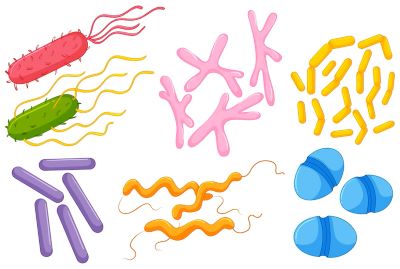Microorganisms are defined as minute organisms that are invisible to the naked eye. A wide range of organisms come under the umbrella of microorganisms, such as bacteria, fungi, virus etc. While their applications are many, microorganisms are essentially found in nature, for the purposes of patents they are considered products of nature and therefore not patentable. In this article, we will take a look at the path that led to establishment of patentability of genetically modified living organisms. We will be discussing Diamond v Chakrabarty, a landmark case that paved the way for wide interpretation of subject-matter for issuance of a patent and led to patenting of human made living organisms.
Facts of the case
- Ananda Mohan Chakrabarty, a genetic engineer working at General Electrics invented a bacterium known as Pseudomonas Putida capable of breaking down crude oil, proposed to aid in treating oil spills.
- A patent US4259444A for the same was filed in the United States by General Electric with Chakrabarty as the inventor. The patent was rejected on the basis that bacteria are living organisms that are naturally occurring.
- The bacteria in question here was genetically modified to incorporate multiple plasmids, each capable of breaking down different hydrocarbon components of the crude oil, into a single bacterium.
- This patent claimed:
- how the bacteria was produced i.e the process detailing the combining of two or more plasmids
- an inoculum with carrier material and the bacterium
- the species of bacteria itself
While the first two claims were granted the third was rejected on the grounds that living organisms are not patentable as given under Title 35 of the USC, on appeal to the Patent Office Board of Appeals this rejection was upheld.
However, the Court of Customs and Patent Appeals reversed the rejection on the grounds that the state of being alive is of no legal significance in the issue of patentability.
The then Commissioner of Patents and Trademarks, Sydney Diamond took this case to the Supreme Court where the decision of the Court was reaffirmed.
The issue before the court
The main issue in this case was whether a living organism like bacteria that is man-made be patented or not.
The arguments advanced by both parties are as follows:
Arguments by the Petitioner – Sydney Diamond
- The petitioners had two arguments, firstly that The Plant Patent Act, 1930 and Plant Variety Protection Act, 1970 point toward clear Congressional understanding that “composition of matter” and “manufacture” of Sec 101 are not inclusive of living organisms.
- They claimed that the above-mentioned acts would be rendered useless if the section included living organisms in its scope.
- Secondly it was argued that protection cannot be granted to microorganisms as genetic technology was not in use when Sec 101 of title 35 of USC was enacted.
Arguments by the Respondent – A.M Chakrabarty
- The respondent’s claim to bacteria was not based on any naturally occurring bacteria but a product of ingenuity which could be classified as a manufacture or composition of matter.
- The Plant acts listed by the petitioner, were enacted to distinguish between non naturally occurring and products of nature and not between living and nonliving organisms.
- The language employed in Patent laws such as the use of expansive terms like ‘manufacture’ and ‘composition of matter’ point towards room for wide interpretation.
Judgement
The Supreme Court of the United States taking note of the arguments and in light of previously decided cases held that:
A live, human-made microorganism is patentable subject matter under Sec 101. Respondent’s micro-organism constitutes a “manufacture” or “composition of matter” within that statute. Pp. 447 U. S. 308-318.
(a) In choosing such expansive terms as “manufacture” and “composition of matter,” modified by the comprehensive “any,” Congress contemplated that the patent laws should be given wide scope, and the relevant legislative history also supports a broad construction. While laws of nature, physical phenomena, and abstract ideas are not patentable, respondent’s claim is not to a hitherto unknown natural phenomenon, but to a non naturally occurring manufacture or composition of matter — a product of human ingenuity “having a distinctive name, character [and] use.” Hartranft v. Wiegmann, 121 U. S. 609, 121 U. S. 615. Pp. 447 U. S. 308-310.
(b) The passage of the 1930 Plant Patent Act, which afforded patent protection to certain asexually reproduced plants, and the 1970 Plant Variety Protection Act, which authorized protection for certain sexually reproduced plants but excluded bacteria from its protection, does not evidence congressional understanding that the terms “manufacture” or “composition of matter” in Sec 101 do not include living things. Pp. 447 U. S. 310-314.
(c) Nor does the fact that genetic technology was unforeseen when Congress enacted Sec 101 require the conclusion that micro-organisms cannot qualify as patentable subject matter until Congress expressly authorizes such protection. The unambiguous language of Sec 101 fairly embraces respondent’s invention. Arguments against patentability under Sec 101, based on potential hazards that may be generated by genetic research, should be addressed to the Congress and the Executive, not to the Judiciary. Pp. 447 U. S. 314-318.”
So, the judgment of the Court of Customs and Patent Appeals was affirmed, and although generally naturally occurring products are not granted patents, growth in genetic technology owing to development of modern science has made way for some interesting exceptions and inclusions as this case of Pseudomonas bacteria aptly illustrates. Thus, General Electric with Ananda Chakrabarty was granted a patent to these claims.
Author: Vaishnavi Srinivas, RV Institute of Legal Studies
Contact us at info@origiin.com to avail services in Patent, Trademark, Contracts, Patent Licensing, M&A
Subscribe to our YouTube Channel HERE
Email: info@origiin.com
Whatsapp: +91 7483806607




